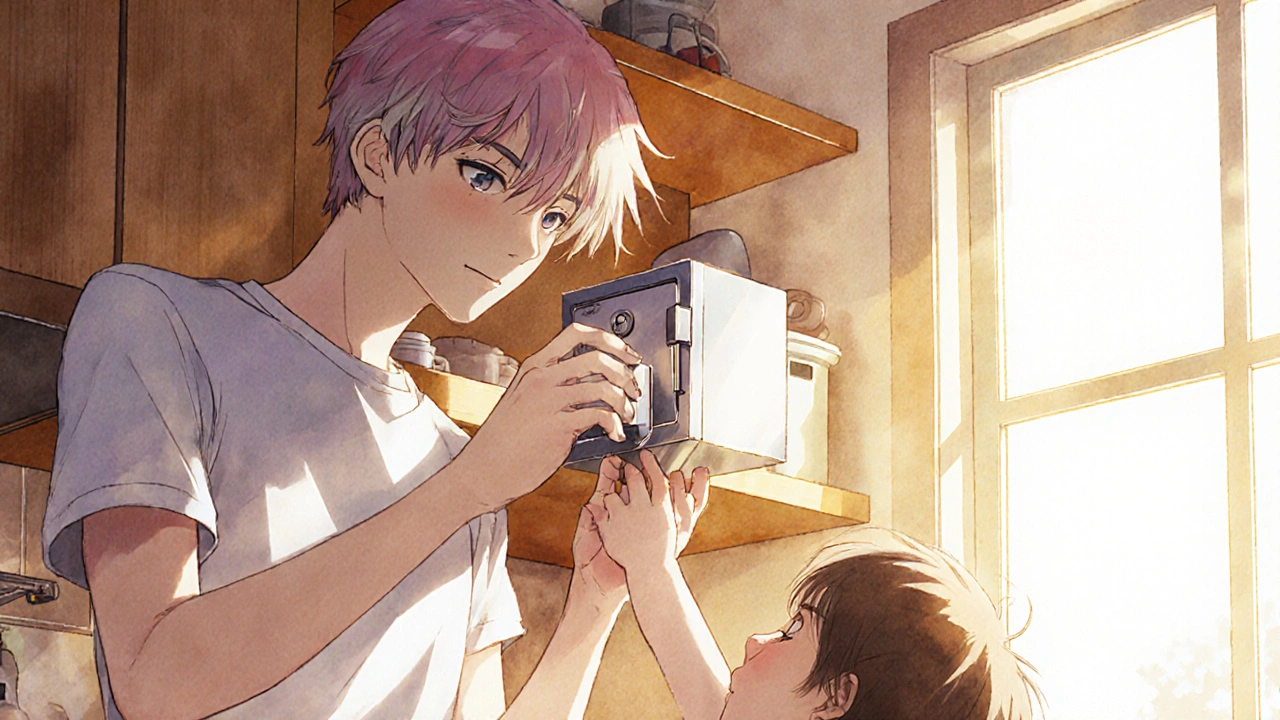Locked Medicine Cabinet: Safe Storage for Prescription Drugs and Why It Matters
When you think of a locked medicine cabinet, a secure storage space for prescription medications, often with a key or combination lock. Also known as a childproof medicine cabinet, it's not just a suggestion—it's a basic safety step every household with drugs should take. Every year, thousands of kids get into pills they shouldn’t touch. Teens grab painkillers or anxiety meds from unsecured cabinets. Even adults accidentally take the wrong medicine because bottles are mixed together on the counter. A locked medicine cabinet isn’t about distrust—it’s about preventing accidents before they happen.
It’s not just about keeping kids safe. The prescription drug safety, the practice of storing and handling medications to prevent misuse, theft, or accidental ingestion starts with where you keep your pills. Studies show that over half of people who misuse prescription opioids get them from a family member’s medicine cabinet. That’s not some distant statistic—it’s your neighbor, your cousin, maybe even someone you know. A simple lock stops most of that. And it’s not just opioids. Benzodiazepines, stimulants, even common painkillers like hydrocodone or tramadol can be dangerous if someone else takes them. The same goes for elderly relatives who might grab the wrong bottle by mistake. A locked cabinet reduces confusion and risk.
It’s also about drug abuse prevention, actions taken to stop the misuse of medications, especially among youth and vulnerable populations. Schools teach kids about drugs, but the real source? The medicine cabinet. A locked cabinet sends a clear message: these aren’t candy. They’re powerful chemicals. And when you lock them up, you’re not just protecting your own family—you’re helping reduce the flow of pills into the black market. Pharmacies don’t sell these without a script for a reason. Your cabinet should work the same way.
Some people think, "I don’t have kids, so I don’t need it." But what about visitors? What about house cleaners, friends staying over, or grandkids visiting for the weekend? What if someone’s going through a tough time and impulsively reaches for a pill? A locked cabinet adds a barrier that gives you time to think, to say no, to get help. It’s not paranoia—it’s practical. And it’s cheap. A basic lockable cabinet costs less than a week’s coffee habit.
You don’t need a fancy setup. Just a cabinet with a lock, a key you keep somewhere safe, and the habit of putting meds back inside after use. No more leaving bottles on the bathroom counter. No more "I thought it was mine" moments. Keep your prescriptions, supplements, and even over-the-counter painkillers in one place—locked. And if you have old or unused meds? Don’t flush them. Don’t toss them in the trash. Take them to a drug take-back site. A locked cabinet is the first step. Proper disposal is the next.
Below, you’ll find real stories and science-backed advice on how to handle medications safely—from what to do when switching from brand to generic, to why certain drugs need extra care, to how to stop treatments without triggering dangerous side effects. All of it ties back to one simple truth: your meds are powerful. Treat them like it.

Storing Medications Away from Children: Essential Safety Practices Every Parent Must Know
Finnegan O'Sullivan Nov 9 10Every year, 60,000 children under five end up in emergency rooms after swallowing medications. Learn the proven, science-backed steps to store medicines safely away from kids - including where to lock them, what to avoid, and how to handle emergencies.
More Detail